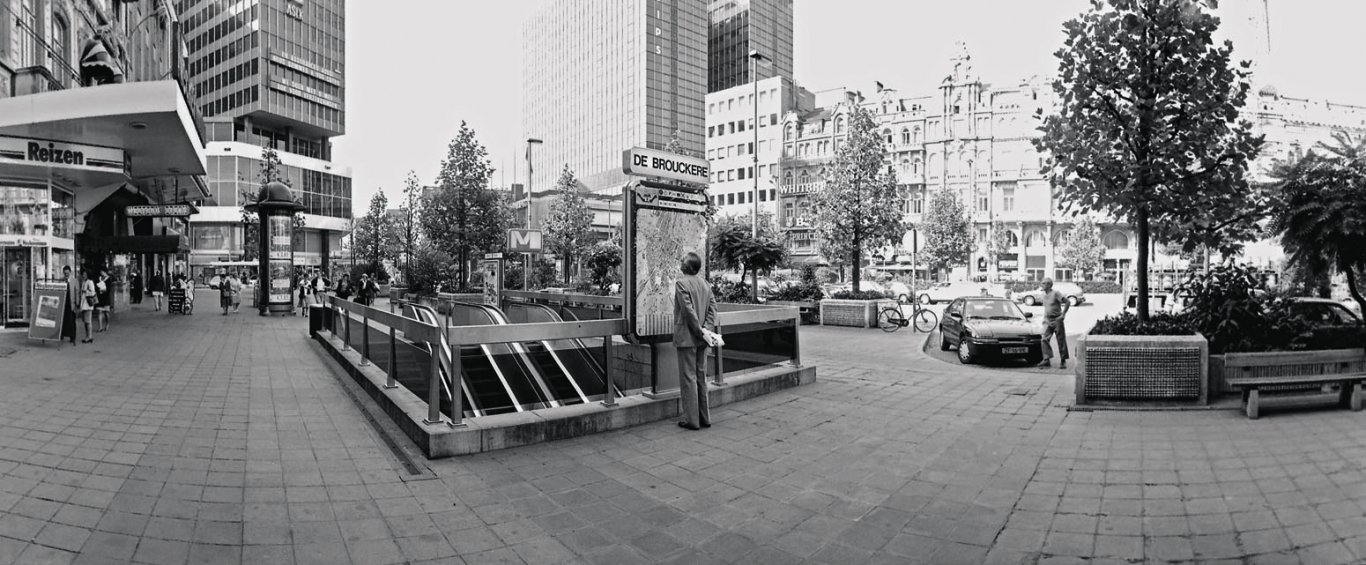
It’s 1972. Jean-Claude Decaux’s bus shelter invented in 1964 already serves around 300 municipalities in France. Parallel to this is the development of another major innovation: the CIP, or City Information Panel (known as MUPI in French, for Mobilier Urbain Pour l’Information). 1972 was a landmark year in the development of JCDecaux. Portugal followed Belgium as the Group’s third country of operation and first non-French-speaking region. That same year, the Group began operations in Paris, with a contract for 1,500 bus shelters. At the time, JCDecaux enhanced its bus shelter street furniture by introducing the City Information Panel.
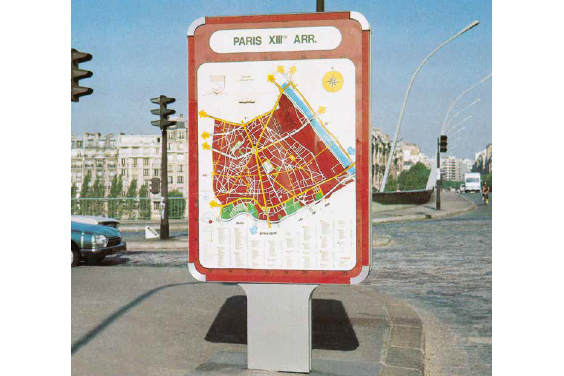
Despite the almost non-existent city information except in city halls, the CIPs disseminate general-interest messages about the city. As such, the panels help residents get their bearings using city and district maps that are easy-to-follow, not forgetting the now-famous “You are here” round icon which gives a clear indication of the CIP location on the map. Much like its “elder brother”, the bus shelter, this “giant monument sign” (as it was so often dubbed by city residents due to its initial design) follows the same economic model developed in 1964. Simply put, the purpose of this advertising panel is to fund services without impacting local community finances. Thanks to this simple idea, the design, manufacture, installation and maintenance of such street furniture would be financed by advertising. Fully aware that some municipalities are unable to design their own maps and billboards, Jean-Claude Decaux would go on to establish an integrated mapping service, backed by a graphic design team, with the aim of delivering turnkey public-interest campaigns.

An ad for JCDecaux, stating: “And yet, we’re not a mapping company.”
The CIP was then designed with the same concern for reliability, upkeep and integration into urban landscapes as bus shelters. These panels would also showcase multiple styles, created both in-house and in collaboration with distinguished designers: Jouin, Wilmotte, Szekely and Cox to name but a few. The goal: to seamlessly integrate into the urban fabric.
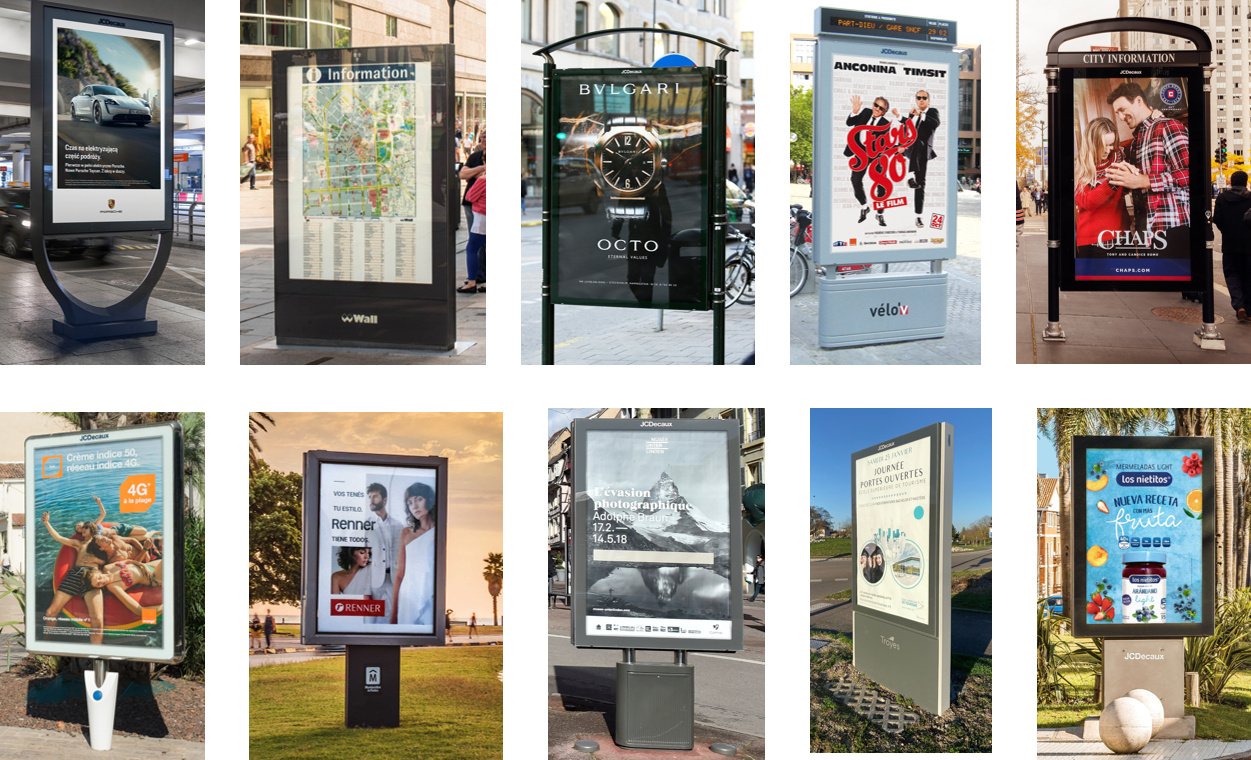
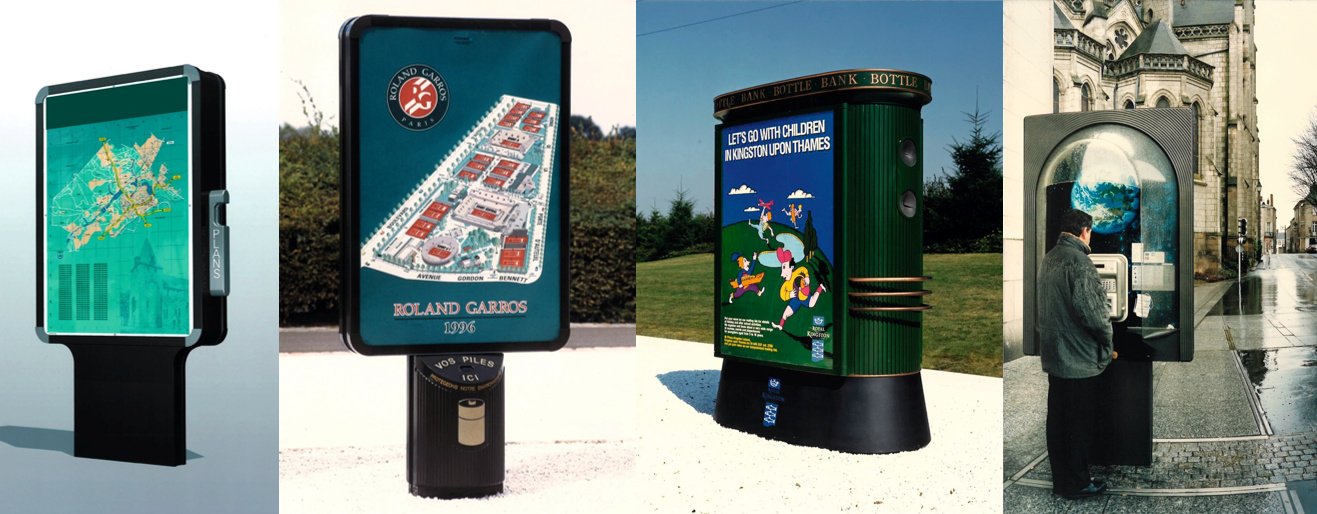
From left to right: city map distributor, battery collection, glass collection, public telephone.
Staying true to the economic model of street furniture, the CIP would generate financing for services including urban signage in many cities, not to mention the first generation of Vélib’, otherwise known as Paris’ self-service bicycle rental scheme.
As of today, over 100,000 CIPs worldwide continue serving us as citizens and residents!
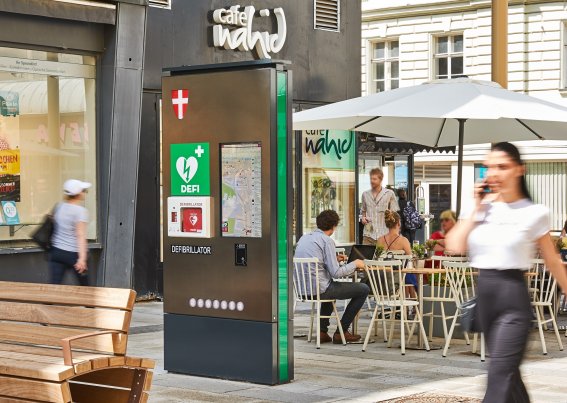
HAPPY 50TH ANNIVERSARY, CIP !
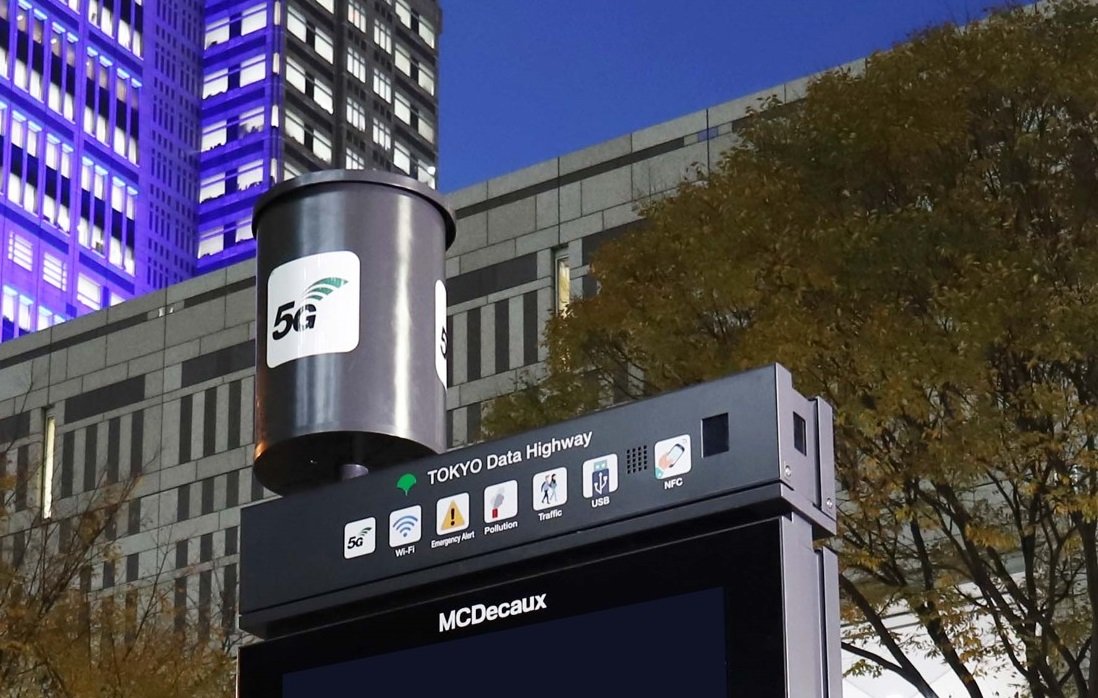
Close-up of a CIP in Tokyo, displaying numerous functionalities: 5G connectivity and Wi-Fi, public emergency alert system, pollution measurement sensors, etc.






